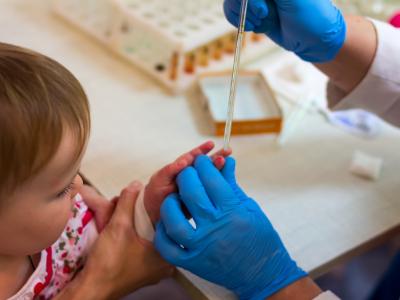Review identifies top risk factors for antibiotic resistance
A systematic review and analysis of available evidence by researchers in the United Kingdom has identified previous antibiotic exposure, underlying disease, and invasive procedures as the top risk factors for antibiotic resistance in humans.
For the review, which was published yesterday in The Lancet Infectious Diseases, researchers with Imperial College London selected and analyzed 565 studies that reported on risk factors from humans, animals, and the environment that result in antibiotic resistance in humans. Using a One Health approach, their aim was to link the quality with the quantity of data reported on antibiotic-resistant bacteria that arise from human, animal, and environmental reservoirs and identify the most evidence-based risk factors. Study quality was assessed in accordance with Cochrane recommendations.
Of the 565 studies included, 527 were reports of primary research and 38 were meta-analyses; the vast majority of the primary research studies (89%) reported on risk factors within the human reservoir, and 11% reported on risk factors arising from the relationships between animal and human reservoirs or human and environmental reservoirs. The 527 primary research studies were used to construct a map of antibiotic resistance drivers.
Of the 88 risk factors identified in these studies, previous antibiotic exposure, underlying disease, and invasive procedures were the risk factors with the most supporting evidence identified. The odds ratios of antibiotic resistance were reported to be between 2 and 4 for these risk factors when compared with their respective controls or baseline risk groups.
Overall, there was little evidence pertaining to cross-reservoir drivers; the effect of the animal reservoir on humans was the most frequently studied aspect of cross-reservoir factors, while evidence supporting the environment as a transmission source for antibiotic-resistant bacteria was scarce.
Aug 29 Lancet Infect Dis review summary
Canadian experts build business case for hospital stewardship programs
Canadian experts have created a business case for antimicrobial stewardship programs (ASPs) in acute care hospitals, which they say will be essential as regulatory and legislative requirements increase.
Writing in Antimicrobial Resistance & Infection Control yesterday, the scientists conducted a review of legislative requirements and outline human resource requirements for ASPs. The also met as a working group to develop the business case.
They found two sets of ASP requirements at the national level: part of the Required Organization Practice by Accreditation Canada and in the National Safety and Quality Health Service Standards required for hospital accreditation in Australia. In addition, ASP legislation was passed in 2014 in California. (The US Joint Commission developed standards in January 2017, but this was after the working group had met.)
The experts identified only one study that addressed human resource requirements. A survey of 65 hospitals in France concluded that 3.6 full-time equivalent (FTE) leads, 2.5 FTE pharmacists, and 0.6 FTE of dedicated microbiologists per 1,000 beds were needed to sustain an ASP, but the study did not provide an evidence-based rationale.
Based on the literature review and consensus development, the working group recommended the following minimum human resources complement: 1 physician, 3 pharmacists, 0.5 program administrative and coordination support, and 0.4 data analyst support as FTEs per 1,000 acute care beds. The experts also developed a spreadsheet-based tool for developing a business case for hospital AFPs into which inputs can be applied to build scenarios for presentation to hospital administration.
Aug 29 Antimicrob Resist Infect Control paper












